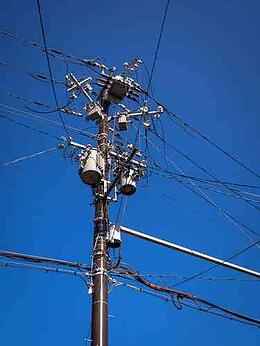How Unauthorized Attachments Lead to Lost Joint Use Rental Revenue
 All businesses are susceptible to theft — including utility pole owners. While it is not likely anyone will dig up a 40 foot tall wooden pole and walk away with it, it is quite possible that some company will come along and attach their equipment to an existing utility pole, without going through the proper channels to do so, and essentially “steal” space on the pole. (Think of it as like a utility pole squatter.) This can lead to financial consequences that go beyond lost rental revenue from the pole attacher.
All businesses are susceptible to theft — including utility pole owners. While it is not likely anyone will dig up a 40 foot tall wooden pole and walk away with it, it is quite possible that some company will come along and attach their equipment to an existing utility pole, without going through the proper channels to do so, and essentially “steal” space on the pole. (Think of it as like a utility pole squatter.) This can lead to financial consequences that go beyond lost rental revenue from the pole attacher.
Under normal circumstances, the concept of joint use utility poles can be extremely beneficial for both the pole owner and the pole “attacher.” A cable or telecom company or some other organization needs the utility pole space in order to provide their service. Instead of having to pay for the construction of their own pole, in addition to its ongoing maintenance, they attach “bootleg” equipment to another company’s pole, and simply pay the owner of the pole “rent” for the space their equipment is occupying (there’s probably not much room left for new poles along existing urban highways anyway!). The pole owner, in turn, gains rental revenue on a pole they already had to manage and maintain. It can be a win-win situation.
The pole attacher is generally required to apply for certain permits before attaching to the pole, but sometimes, proper permitting is completely ignored, or it accidentally slips through the cracks somewhere along the line due to poor or nonexistent communication. This is where things can get complicated in the legal sense (just think about how complicated property ownership can become due to squatter’s rights). Some state laws, for example, allow attachers to move forward with their installations if they have applied for a permit but the pole owner has not responded (either granting or denying the permit) within a certain amount of time.
The problems unpermitted attachments can cause go beyond the loss of rental revenue. In addition, illegal attachments can lead to:
- Penalties and fines from possible National Electric Safety Code (NESC) violations.
- Safety hazards for utility pole workers.
- Overloaded poles, which can break more easily due to the excess weight, causing possible damage and injury.
- Attachment disputes, which can result in costly legal battles.
Pole owners are ultimately responsible for any consequences caused by unpermitted attachments. So even if a pole were to break due to an illegal attachment, it is likely that the owner will be the one paying for the damages, in addition to the cost of replacing the pole.
The only way to discover unpermitted attachments (unless, of course, they are discovered after a problem occurs) is through regular pole inspections. By performing routine utility pole inspections (and maintaining an accurate pole inventory database that tracks information regarding attachments on poles), pole owners can discover unpermitted attachments before they cause issues. Then the empowered pole owner can take action, recouping any rent owed and avoiding the larger problems that illegal, unauthorized or “bootleg” attachments can cause.

Comments